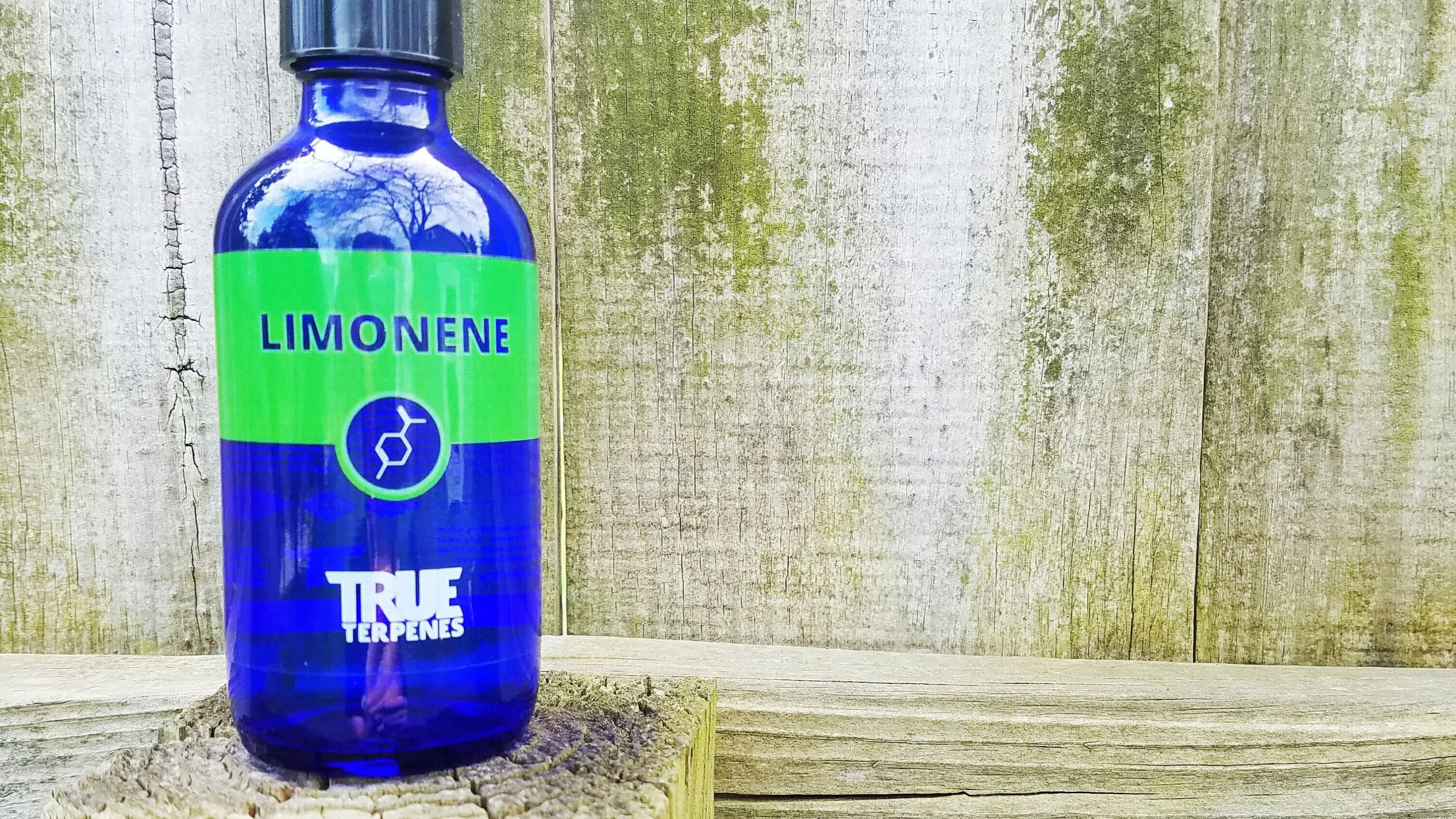Just a drop will do, I'm told. Anything more than that will be too much.
The blue vial measures roughly an inch in height, maybe half that in width, and it contains a concentrated blend of liquid terpenes—the aromatic compounds found across earth's plant life that are responsible for the diversity of odors that occur in the cannabis kingdom.
This particular blend of plant-derived terpenes was formulated to mimic the smell of a strain called Sunset Sherbet, and I'm adding it to some old, stale weed with the hopes it will bring my expired stash back to life.
Manufactured by Portland's True Terpenes, the Sunset Sherbet blend was reverse engineered from a sample of the titular cannabis varietal. Composed of roughly 30 individual, isolated terpenes and mixed at the ratios that occur in nature, the blend can be used to enhance or renew the smell and taste of cannabis flowers and extracts, as well as edibles and topicals.
True Terpenes co-founder Ben Cassiday, who got his start in the cannabis industry at an online certification clinic that helps the ill get their medical marijuana cards, became interested in terpenes after interacting with people who use cannabis as medicine. Cassiday and his business partner, Chris Campagna, began to wonder, in Cassiday's words, "What made strains of cannabis more potent, flavorful or well-suited for complementary treatment of certain health conditions?"
This led him to research terpenes, which, he discovered, do much more than give weed its smell: These aroma molecules influence the high from consuming cannabis, working in concert with flavonoids and cannabinoids like THC and CBD to shape a person's experience with a particular strain.
Cassiday likens terpenes and cannabinoids to various parts of an airplane: "Cannabinoids are the jet engines, required for getting off the ground and staying in flight, while the terpenes are the rudders on the wings, used for controlling where the craft will fly and how comfortable the experience will be."
Terpenes like linalool provide a sedative effect, while others like limonene boost a person's mood. When these terpenes are lost to age or destroyed in the extraction process, also lost are therapeutic benefits that guide your flight.
But how well will an old plane fly after getting some repairs, so to speak?
I decided to find out.
Because I'm not big on dabs, I opted to see how these terpene cocktails would affect some stale flower I had. Jarred for months, these buds had lost much of their aroma and flavor, as well as their more pronounced psychoactive nuances, offering themselves as a decent blank slate on which to experiment.
I started by grinding a few grams of flower, which I tossed in a plastic container with a drop of Super Lemon Haze— bearing the distinct aroma of the citrusy varietal.
After shaking the finely ground weed for a few minutes to more evenly distribute the liquid terpenes, I let it steep for an hour or so.
I then repeated the process with a terpene profile of the famed cannabis varietal Blueberry, manufactured by True Terpenes competitor Terpene Botanicals, as well as another Blueberry profile produced by Terpene Flavors.
I first sampled the Super Lemon Haze concoction, which smelled fantastic but tasted exactly like what it was: old weed, with some fresh terpenes laced over the dominant, stale flavor. Yet, despite the lack of flavor penetration, True Terpenes' Super Lemon Haze did in fact lift my mood and influence divergent mental patterns, which were never traits of the weed I started with.
The Blueberry blend by Terpene Flavors was miles away from capturing the legendary DJ Short Blueberry, instead resembling the smell of a Slurpee or some experimental, berry-flavored gum. It was more akin to candy than cannabis, and wasn't at all what I had in mind.
On the other hand, the Blueberry blend produced by Terpene Botanicals was relatively dutiful, based not on synthetic visions of sweets, but on the strain of weed it's named after. Containing roughly half the variety of terpenes as the blends produced by True Terpenes, the scent was less nuanced—more of a blunt instrument— but it did improve my experience with my expired flowers.
During the next few days, I did more experiments with different blends, finding I preferred the products by True Terpenes over the competition. Moreover, as competitor blends dissipated from the flowers they were applied to, the products by True Terpenes had a lasting effect, over time sinking deeper into the old buds—eventually overwriting much of the stale taste to transform the samples back to something resembling fresher weed.
That said, True Terpenes' strain blends won't bring back lost flavonoids, so there's still some taste and psychoactivity to be desired even after an aged flower's terpene content is restored. But these guys are taking huge steps forward in immortalizing the scents of weed's greatest hits, while helping more people gain access to terpene profiles with known therapeutic benefits. It's a whole new world.
